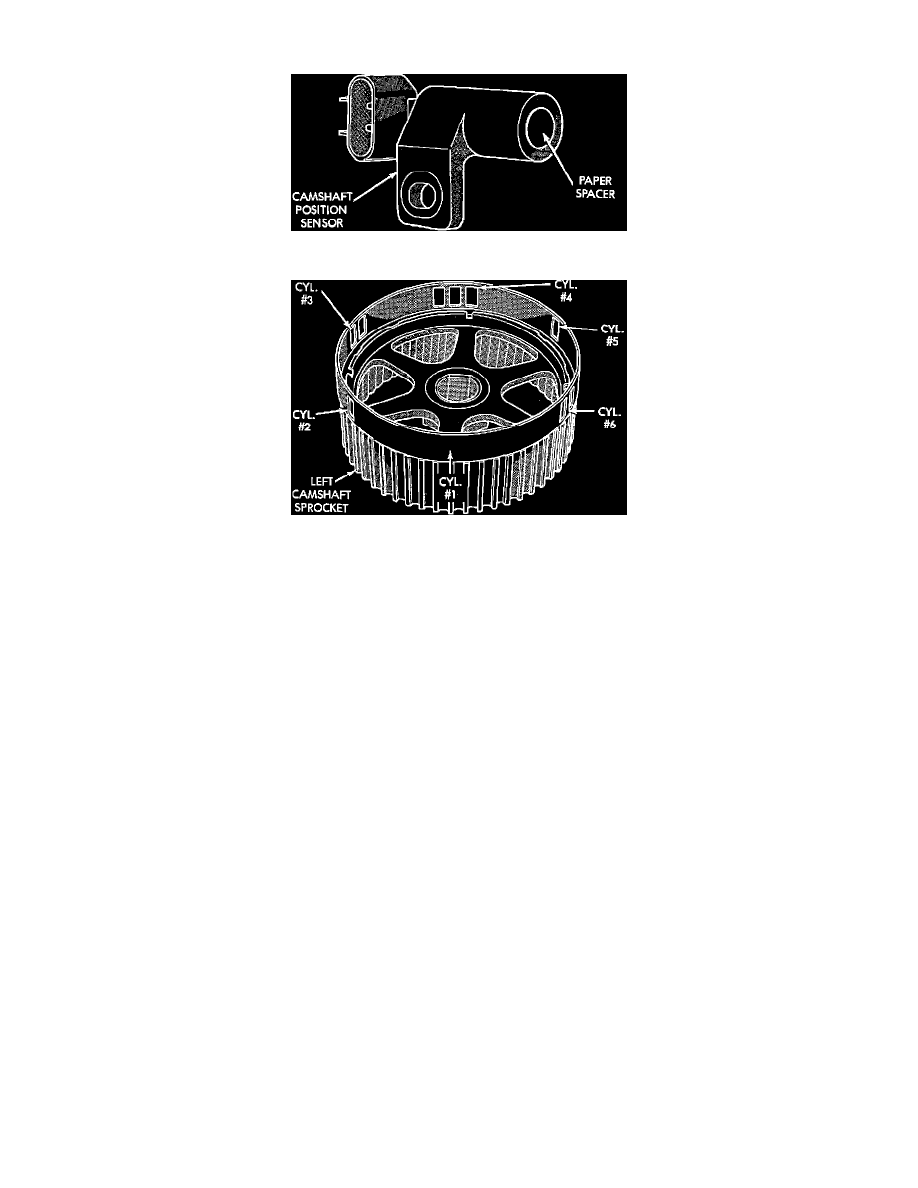Intrepid V6-215 3.5L (1995)

Camshaft Position Sensor: Description and Operation
Camshaft Position Sensor 3.5L
Camshaft Sprocket 3.5L
FUNCTION
The signal from the camshaft position sensor combined with the input signal from the Crankshaft Position Sensor (CKP), are what the engine PCM
uses to properly synchronize injection.
OPERATION
The Powertrain Control Module (PCM) and identifies cylinders by monitoring signals from the crankshaft and camshaft position sensors. The
PCM uses these input signals to determine fuel injector synchronization.
The camshaft position sensor generates a high/low voltage signal, as slots in the camshaft gear are detected. When a slot passes in front of the
sensor, a 5 volt signal is sent to the PCM. When a slot is not present, the PCM receives a 0.3 volt signal.
If PCM does not sense input from cam position sensor, PCM will deactivate ASD and fuel pump relay, interrupting voltage to fuel pump, fuel
injectors, and ignition coil, (no start condition).
CIRCUIT OPERATION
Circuit K7 supplies 8 Volts from the Powertrain Control Module (PCM) to the Camshaft Position Sensor. The K7 circuit connects to cavity 7 of
the PCM connector.
Circuit K44 from the sensor provides an input signal to the PCM. The K44 circuit connects to cavity 44 of the PCM.
The PCM provides a ground for the camshaft position sensor signal (circuit K44) through circuit K4. Circuit K4 connects to cavity 4 of the PCM
connector.
